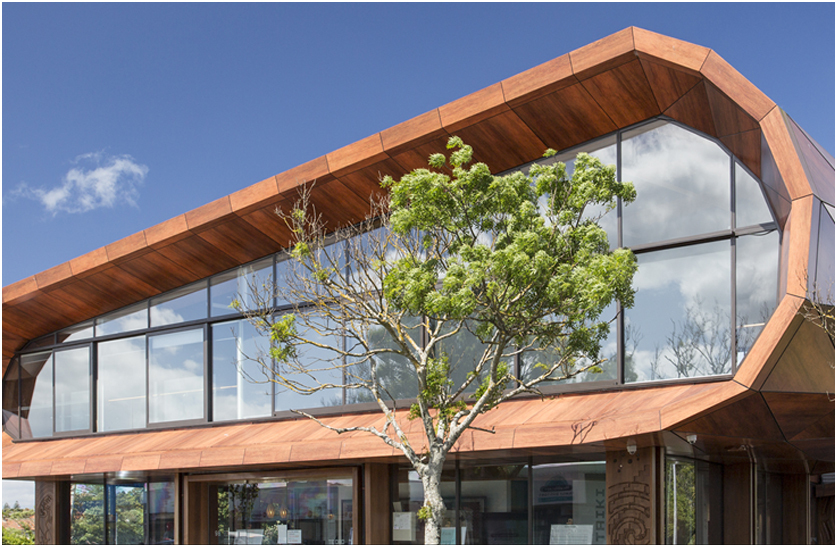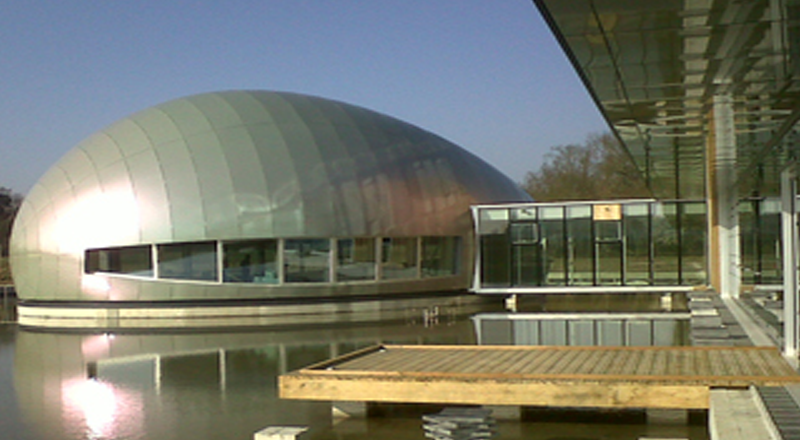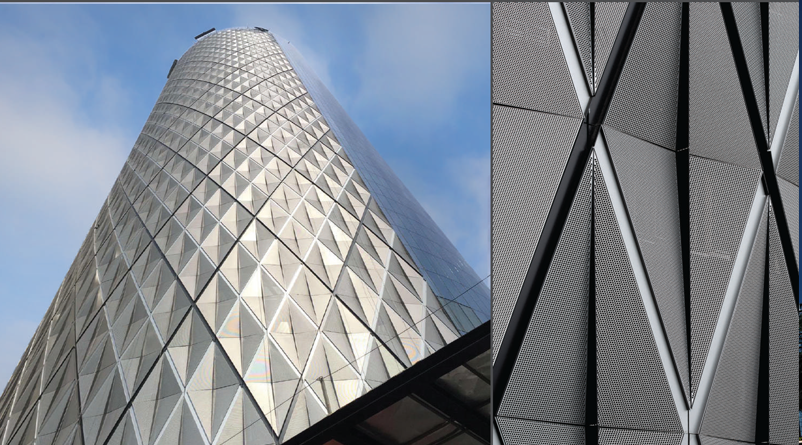
Metal Cladding: Benefits, Types, and Installation Costs for Durable Exterior Facades
When you want a strong and stylish exterior for your building, metal cladding delivers both durability and elegance. This versatile material not only protects structures from harsh weather but also enhances their visual appeal. Whether you’re planning a modern architectural project or upgrading your property’s exterior, metal cladding stands out as a top choice.
In this article, we’ll explore the advantages of metal cladding, the different types available, and how much installation typically costs. If you’re considering aluminum composite panels or facade cladding systems, this guide will help you make the right decision.
Explore our complete guide to metal cladding options
What is Metal Cladding?

Metal cladding uses metal panels to shield the outside of a building. These panels create a protective layer that safeguards the structure from weather and other external factors while providing a sleek, modern look. Most metal cladding systems feature materials like aluminum composite sheets, known for their durability and aesthetic appeal.
Builders and architects use metal cladding in various designs, as it withstands high temperatures and extreme weather conditions. You’ll often see it on high-rise buildings or homes in areas prone to tough climates.
Why Choose Metal Cladding?
1. It Protects Your Building
With metal cladding, you ensure your building stays safe from wind, rain, and UV rays. Materials like aluminum facade cladding systems resist corrosion and maintain their appearance over time. Using cutting routing techniques, manufacturers craft precise panels to fit perfectly around architectural features, giving you a seamless finish.
2. It Resists Fire
Modern metal cladding incorporates fire-resistant materials to offer additional safety. Options like aluminum composite panels with flame retardant cores prevent fire from spreading quickly, keeping occupants and property secure.
3. It Saves Energy
Metal cladding enhances energy efficiency by regulating indoor temperatures. Reflective surfaces, like those in aluminum composite sheets, help keep interiors cooler during summer and warmer in winter. This reduces energy use for heating or cooling and lowers your utility bills.
4. It Looks Great
The sleek finish of metal cladding adds sophistication to any building. Choose from various colors, textures, and designs to match your vision. Whether you’re working on a commercial space or residential property, metal cladding elevates your facade design effortlessly.
Types of Metal Cladding
1. Aluminum Composite Panels (ACP)
Aluminum composite panels combine two thin aluminum layers with a core material like polyethylene or fire-resistant compounds. These panels are lightweight, durable, and highly customizable. They suit both small renovations and large architectural projects.
2. Aluminum Facade Cladding Systems
Aluminum facade cladding systems use aluminum composite sheets with advanced installation methods like rails or brackets. These systems offer excellent insulation and long-lasting durability, making them ideal for commercial and residential buildings.
3. Honeycomb Panels
Honeycomb panels feature a honeycomb core sandwiched between aluminum layers. This unique design provides strength and reduces weight. These panels are perfect for high-performance facade cladding, offering soundproofing and thermal insulation.
4. Roll-Formed Panels
Manufacturers create roll-formed panels by passing metal sheets through rollers to achieve the desired shape. These panels are cost-effective, easy to install, and widely used in façade cladding for various building types.
What Does Metal Cladding Cost?
Installing metal cladding typically costs between $20 and $50 per square meter. The price depends on the material, design, and building size. While high-quality options like aluminum composite panels or fire-resistant materials may cost more upfront, they deliver long-term savings through low maintenance and energy efficiency.
Factors that influence costs include:
- Material Type: Premium materials like honeycomb panels or fire-resistant aluminum composite sheets are more expensive.
- Labor: Skilled professionals ensure proper installation, which may increase costs.
- Design Complexity: Unique shapes or intricate designs require more time and expertise.
- Project Size: Larger buildings need more materials and labor, raising overall expenses.
Installation: What You Need to Know
To install metal cladding, professionals prepare the surface and secure panels using clips, brackets, or adhesives. Each panel is crafted to match the building’s design, ensuring a perfect fit. Using tools like cutting routing machines, installers shape the panels around windows, doors, and other features seamlessly.
For taller structures like high-rise buildings, you may need scaffolding or specialized equipment, which could add to the cost. However, the result is a durable, weather-resistant exterior that enhances the building’s look and performance.
Why Metal Cladding is Worth It
Metal cladding is an investment in durability, safety, and design. It reduces maintenance needs, improves energy efficiency, and offers protection against fire and weather. Choosing options like aluminum facade cladding systems or honeycomb panels ensures your building looks great and performs well for years to come.
Whether you’re designing a sleek modern building or updating an older structure, metal cladding offers a reliable, stylish solution. Don’t hesitate to explore this option for your next project!
Additional Insights into Metal Cladding: Everything You Need to Know
Metal cladding is more than just a protective layer; it’s a vital component in modern construction and architectural innovation. While the basics of its benefits and types are widely known, there are deeper layers of information that can guide your decision-making. Here, we’ll explore more about metal cladding installation techniques, maintenance tips, and its applications across various industries.
Installation Techniques for Metal Cladding

Proper installation is crucial to ensure the effectiveness and longevity of metal cladding. The right techniques not only enhance durability but also improve the aesthetic appeal of the facade.
1. Panel Fixing Methods
Metal cladding panels are typically attached using brackets, screws, or adhesive systems. The most suitable method depends on the type of cladding and the structure of the building.
- Bracket Systems: These are ideal for aluminum composite panels and allow for easy installation and replacement.
- Adhesive Systems: Suitable for smooth surfaces, these systems provide a clean finish without visible fasteners.
- Mechanical Fasteners: These are widely used for heavy-duty cladding, such as honeycomb panels or steel sheets.
2. Weatherproofing and Insulation
Installers often incorporate weatherproof membranes and thermal insulation during the cladding process. These layers enhance energy efficiency and protect the core material from moisture, preventing long-term damage.
3. Customization with Cutting and Routing
Modern techniques like cutting routing allow manufacturers to create customized panels that fit perfectly around windows, doors, and curves. This precision ensures a seamless appearance and reduces waste during installation.
Applications of Metal Cladding Across Industries
The versatility of metal cladding makes it suitable for a wide range of applications, from residential homes to large industrial complexes.
1. Residential Buildings
Homeowners often use metal cladding for its sleek design and low maintenance. Aluminum facade cladding systems are particularly popular for creating contemporary exteriors that blend aesthetics with functionality.
2. Commercial Spaces
In commercial construction, metal cladding offers a professional and durable finish. Buildings such as offices, malls, and hotels use aluminum composite panels to achieve visually striking designs.
3. High-Rise Buildings
Skyscrapers and high-rise buildings benefit significantly from metal cladding. The lightweight yet durable nature of materials like honeycomb panels ensures safety without compromising design.
4. Industrial Facilities
Factories, warehouses, and industrial complexes rely on metal cladding for its ability to withstand harsh conditions. Its fire-resistant properties make it a reliable choice for industries dealing with high temperatures or flammable materials.
Maintenance Tips for Metal Cladding
Proper maintenance is essential to retain the appearance and functionality of metal cladding. Regular care ensures that your investment lasts for decades.
1. Regular Cleaning
Dust, debris, and pollutants can accumulate on the surface over time. Clean the cladding at least twice a year using mild detergents and a soft brush to avoid scratches.
2. Inspect for Damage
Check for dents, scratches, or loosened panels regularly. Addressing minor issues early prevents more significant problems later, especially for facade cladding exposed to harsh weather.
3. Recoat or Seal
Some metal cladding materials, like steel, may require recoating or sealing every few years to prevent corrosion and maintain their finish.
4. Professional Maintenance Services
Hire professionals to conduct annual inspections and deep cleaning. Experts can spot hidden issues and ensure that the cladding maintains its high-quality performance.
Comparing Metal Cladding to Other Materials

When choosing exterior finishes, it’s essential to compare metal cladding with other options like wood, stone, or vinyl.
1. Durability
Unlike wood, which can rot, or vinyl, which may crack, metal cladding resists weathering and maintains its integrity for decades.
2. Fire Resistance
Few materials match the fire-resistant properties of aluminum composite panels and honeycomb panels. These materials provide a layer of protection that outperforms alternatives like wood or vinyl.
3. Eco-Friendliness
Many metal cladding options, such as aluminum facade cladding systems, are recyclable. This makes them a sustainable choice compared to materials that generate waste or require frequent replacement.
4. Cost-Effectiveness
While the upfront cost of metal cladding may be higher than some materials, its low maintenance and long lifespan make it a cost-effective solution over time.
Future Trends in Metal Cladding
The construction industry continues to innovate, and metal cladding is evolving with it. Here are some trends shaping its future:
1. Advanced Fire-Resistant Materials
With increasing safety regulations, manufacturers are developing even more robust fire-resistant materials to meet stringent building codes.
2. Energy-Efficient Designs
New technologies are enhancing the energy efficiency of metal cladding, with reflective coatings and improved insulation layers becoming standard.
3. Smart Panels
The rise of smart technology is influencing facade design. Future metal cladding may include integrated solar panels or temperature-regulating features.
Metal cladding offers a unique combination of durability, style, and functionality that few materials can match. Whether you’re designing a home, a commercial building, or an industrial facility, it delivers on all fronts. With proper care and the right installation techniques, your metal cladding investment will provide decades of protection and visual appeal.
If you’re considering an upgrade or planning a new construction project, explore the wide range of metal cladding options available today and take your facade design to the next level!
Frequently Asked Questions
1. What is metal cladding, and why is it used?
Metal cladding is a protective layer applied to the exterior of buildings using materials like aluminum composite panels. It provides durability, weather resistance, and aesthetic appeal while enhancing the structure’s energy efficiency and fire resistance.
2. What are the benefits of aluminum composite panels in facade design?
Aluminum composite panels are lightweight, durable, and resistant to weather and fire. They are easy to install and highly customizable, making them ideal for modern facade designs.
3. How much does metal cladding installation cost?
The cost of metal cladding installation ranges from $20 to $50 per square meter, depending on the material, design complexity, and size of the project.
4. Are metal cladding materials fire-resistant?
Yes, many metal cladding options, such as aluminum composite sheets with a fire-resistant core, are designed to withstand high temperatures and prevent fire spread.
5. Can metal cladding improve energy efficiency?
Absolutely! Metal cladding, especially reflective materials like aluminum facade cladding systems, helps regulate indoor temperatures, reducing energy consumption and improving efficiency.
Conclusion
In conclusion, metal cladding offers unmatched durability, energy efficiency, and aesthetic appeal for modern architecture. Whether you’re designing a residential property, a commercial space, or a high-rise building, it provides long-lasting protection and style. With a wide range of materials and designs, metal cladding ensures your facade meets both functional and visual goals. Invest in this versatile solution to elevate your building’s exterior and enjoy its many benefits for years to come.